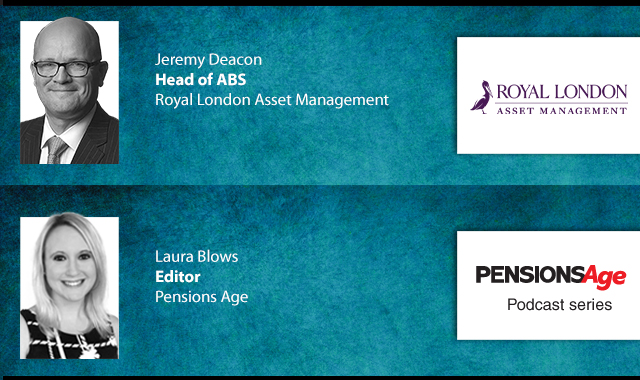Nest has begun testing attitudes among the self-employed to understand which messages are most effective in encouraging them to increase their retirement saving.
The provider’s collaborative research unit, Nest Insight, is using results from its research with the Department for Work and Pensions on self-employed saving to determine the best way to increase pension engagement within the UK’s self-employed community.
The first trial, which began in June 2019, is with members of The Association of Independent Professionals and the Self-Employed (IPSE) who are offered a group personal pension provided by Aegon.
The second trial, which began in September 2019, is with self-employed Nest pension members.
In each case four different email messages are being tested to understand which is most effective in driving engagement and propensity to save.
The first message explains a method of saving labelled “Palatable contributions”, which would see self-employed savers put away daily, rather than monthly contributions into a pension.
The second message revolves around a flexible saving method, which allows workers to pay as much or as little money as they can into a scheme whenever they wish to.
The third message explains the benefits of tax relief on pension contributions, while the fourth warns them about missing out on pension returns.
Nest Insight head of research and innovation, Jo Phillips, has said that the research to date has established that control and adaptability to changing circumstances are very important factors for self-employed people, as is some ability to access their money in case it is needed, often due to the varied pattern of their income.
Philips explained that Nest insight is also currently exploring opportunities to build simple and easy ways to save within the personal finance and accounting platforms that self-employed people already use.
It is preparing two or more technology-based trials in partnership with providers of platforms used by self-employed people to manage their money, with initial findings due to be released next year.
“Although most self-employed people say they want to save for retirement, many struggle to do so in practice. Encouragingly most are open to help, guidance and encouragement to get on track with saving for later life,” said Philips.
“We know that self-employed people are a highly diverse population and it will be tricky to find a one-size-fits-all approach. By asking self-employed workers what they want, we’ve taken a significant step forward to discovering what those solutions might look like.”
Standard Life head of global savings policy, Jamie Jenkins, welcomed NEST’s work, saying that its research had helped move work on self-employed saving forward.
“It’s easy to consider a simple extension of auto-enrolment to cover the self-employed, although in practice any solution will be a lot more nuanced,” he said.
“In fact, it may require several different approaches to ensure the self-employed population is saving for retirement, given its sheer diversity. This work will allow trials to move on to a more operational level, and start to test what really works in practice.”
Meanwhile, Aegon head of pensions, Kate Smith, said that saving flexibility was vital for self-employed workers.
“Pension funds offer valuable tax incentives but are not accessible in emergencies before age 55, meaning for many self-employed, saving for retirement might best involve a combination of pension and more accessible savings products such as ISAs,” she said.
She added that building on the nudge principles from auto-enrolment and continuing to use existing workplace pensions were also viable solutions for those work for themselves.
“With 44 per cent of self-employed people aged between 50 and 65 it’s highly likely they will have been employed before and therefore have saved into one or more workplace pensions,” said Smith. “These have the potential to offer the flexibility that the self-employed need.”
Finding ways to increase self-employed saving is becoming urgent. As part of its research, Nest Insight discovered that over half (56 per cent) of self-employed people like the idea of automatically diverting a proportion of their income to saving for retirement.
It has also found that half of self-employed workers are not confident about how they will fund their retirement, and only 24 per cent have said that they currently contribute to a pension.
Latest News
-
Minimal changes expected to AS TM1; final UK Stewardship Code guidance shared
-
Low earners face 'double-edged' pension challenge
-
LGPS Central AUM to top £100m as six funds confirm plans to join
-
Blog: Delivering a pension treat, not trick
-
FCA review highlights need for effective management in push for consolidation
-
This week in pensions: 27-31 October 2025
Private markets – a growing presence within UK DC
Laura Blows discusses the role of private market investment within DC schemes with Aviva Director of Investments, Maiyuresh Rajah
The DB pension landscape
Pensions Age speaks to BlackRock managing director and head of its DB relationship management team, Andrew Reid, about the DB pensions landscape
Podcast: Who matters most in pensions?

In the latest Pensions Age podcast, Francesca Fabrizi speaks to Capita Pension Solutions global practice leader & chief revenue officer, Stuart Heatley, about who matters most in pensions and how to best meet their needs
Podcast: A look at asset-backed securities

Royal London Asset Management head of ABS, Jeremy Deacon, chats about asset-backed securities (ABS) in our latest Pensions Age podcast
© 2019 Perspective Publishing Privacy & Cookies










Recent Stories